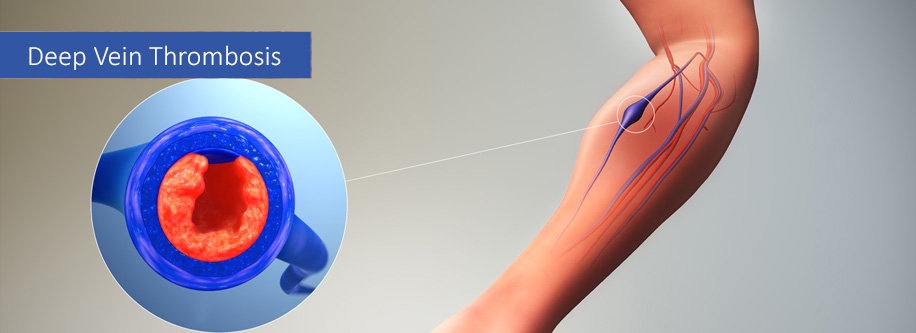Deep vein thrombosis is a pathological condition characterized by the formation of blood clots, mostly in the deep veins of the lower extremities. This disease occurs in 10-20% of the population. If left untreated, it can cause death due to pulmonary embolism. Post-thrombotic syndrome is a late complication of deep vein thrombosis.
Deep Vein Thrombosis
Deep Vein Thrombosis
What is Thrombosis?
Thrombosis, in general, is the process of blood clot formation. As a result of this pathological process, the lumen of the blood vessel may be partially narrowed or completely blocked. The formation of clots is facilitated by the slowing down of the blood flow, damage to the inner lining of the blood vessels – endothelium, and changes in blood properties. Deep vein thrombosis is a disease in which blood clots form in the deep veins.
This process is accompanied by inflammation of the vein wall (phlebitis), so the disease is also called thrombophlebitis of deep veins. Since thrombosis is practically always accompanied by phlebitis, the diagnosis of thrombosis and thrombophlebitis are often equated with each other. After the formation of a thrombus in the veins, inflammation develops around the thrombus, the thrombus adheres to the vein wall, which causes damage and inflammation of the latter.
Main Symptoms
Swelling of the limb depending on the localization of the thrombus;
redness of the limb;
A feeling of heaviness and warmth in the limb.
In some cases, this problem may not be accompanied by any symptoms.


